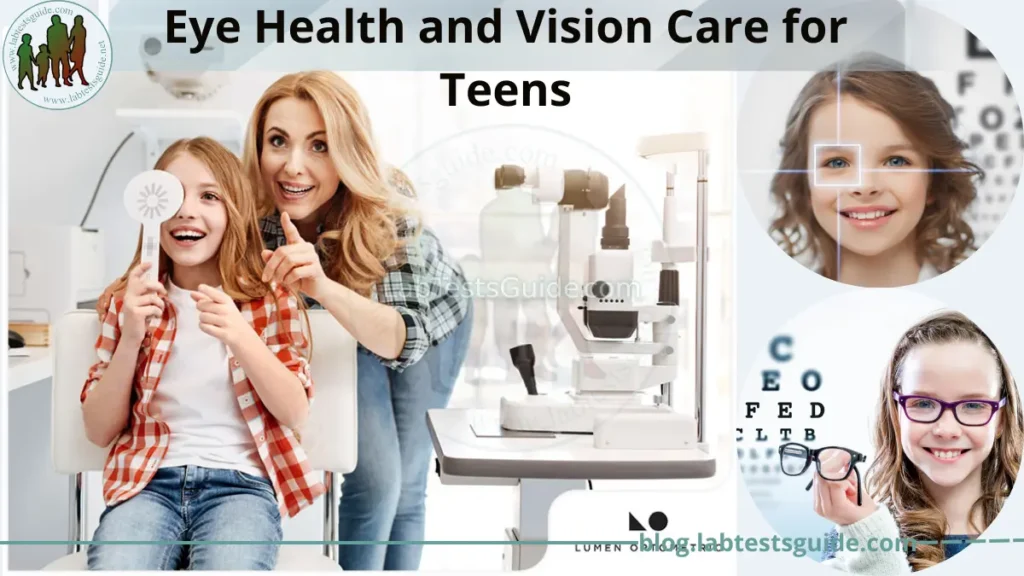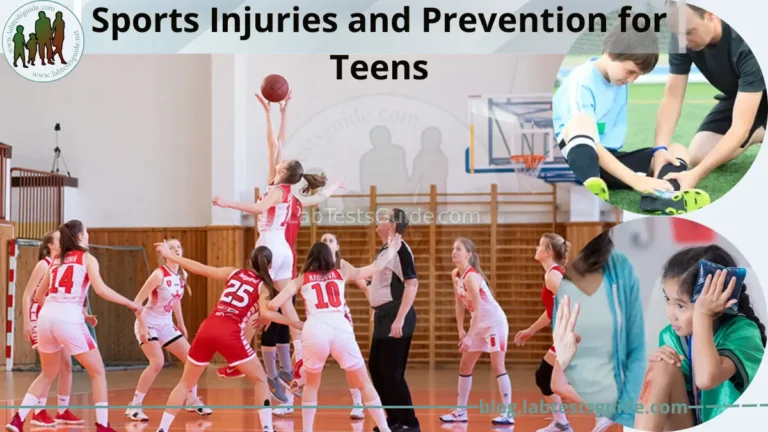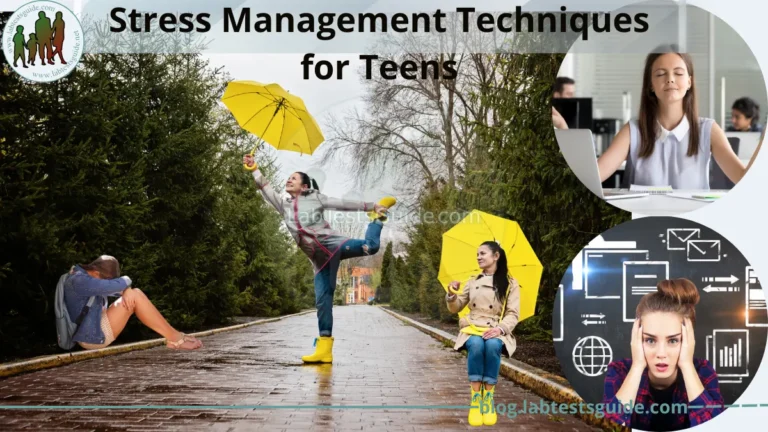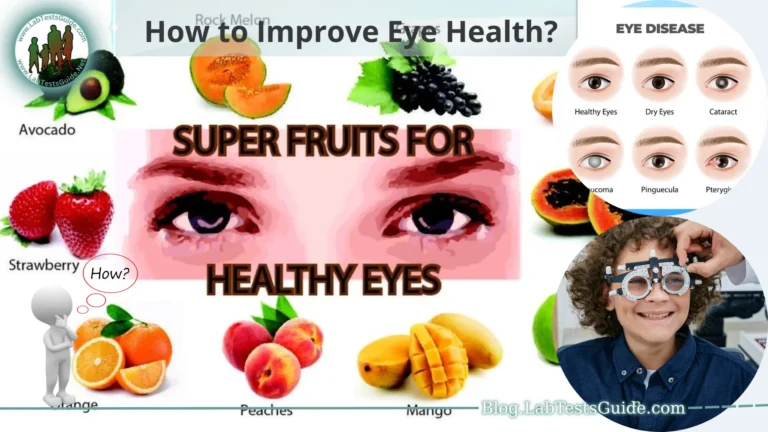The eyes are an important sensory organ that allows us to see the world around us. As a teenager, it is essential to take good care of your eyes to maintain good vision and prevent eye problems from developing. This is because, during teenage years, the eyes are still developing and are more vulnerable to various eye conditions and diseases. Therefore, practicing good eye health and vision care habits can help reduce the risk of developing eye problems in the future.

In this guide, we will discuss the importance of eye health and vision care for teens, common eye problems in teens, the need for regular eye exams, and ways to correct vision. We will also explore ways to prevent eye injuries, reduce digital eye strain, and maintain healthy eyes through proper nutrition. Additionally, we will discuss various eye conditions and diseases that can affect teens and provide tips on how to manage them. Finally, we will conclude by emphasizing the importance of seeking professional help and prioritizing eye health and vision care.
Eye Exams:
Eye exams are an essential part of maintaining good eye health and vision care for teenagers. Regular eye exams can help detect eye problems early and prevent them from worsening. In this section, we will discuss when to schedule an eye exam, what to expect during an eye exam, and the importance of regular eye exams.
When to Schedule an Eye Exam:
According to the American Optometric Association (AOA), infants should have their first eye exam at six months of age, followed by a second exam at three years of age.
Children and teenagers with no known vision problems or risk factors should have their eyes checked every two years.
Teenagers with a family history of eye problems, eye conditions, or diseases should have their eyes checked more frequently, as recommended by an eye care professional.
What to Expect During an Eye Exam:
- Eye exams typically involve a series of tests to evaluate your vision, eye movement, eye coordination, and eye health.
- Eye exams may include a visual acuity test to measure how well you can see letters or numbers on a chart from a distance.
- Eye exams may also include a refraction test to determine the correct prescription for corrective lenses, such as eyeglasses or contact lenses.
- Eye exams may include an eye health evaluation to detect eye problems or diseases, such as glaucoma or cataracts.
Importance of Regular Eye Exams:
Regular eye exams can help detect eye problems early and prevent them from worsening.
Early detection and treatment of eye problems can improve vision and prevent vision loss.
Eye exams can also detect underlying health problems, such as diabetes or high blood pressure, which can affect eye health.
Regular eye exams can also help ensure that your corrective lenses prescription is up to date and appropriate for your vision needs.
In summary, scheduling regular eye exams and seeking professional help when necessary is critical for maintaining good eye health and vision care for teenagers. It is also essential to follow the recommended schedule for eye exams and to be proactive in addressing any vision problems or concerns.
Vision Correction:
Vision correction is a crucial aspect of eye health and vision care for teens with vision problems. Proper vision correction can help improve visual acuity, prevent eye strain and headaches, and enhance overall quality of life. In this section, we will discuss different types of vision correction options available for teens.
- Eyeglasses:
- Eyeglasses are a common and straightforward way to correct refractive errors, such as myopia (nearsightedness), hyperopia (farsightedness), and astigmatism.
Prescription eyeglasses are available in various lens materials, including glass, plastic, and polycarbonate, with different coatings to enhance comfort and durability.
Teenagers can choose from a wide range of fashionable eyeglass frames, including metal, plastic, rimless, and semi-rimless styles.
Contact Lenses: - Contact lenses are an alternative to eyeglasses that can correct a wide range of vision problems, including myopia, hyperopia, astigmatism, and presbyopia.
There are various types of contact lenses available, including soft contact lenses, rigid gas permeable lenses, and hybrid lenses, each with unique benefits and drawbacks.
Contact lenses require proper hygiene and care to avoid eye infections and other complications.
Orthokeratology (Ortho-K) Lenses: - Ortho-K lenses are specialized contact lenses designed to reshape the cornea overnight to correct myopia temporarily.
Ortho-K lenses are typically worn during sleep and removed in the morning, providing clear vision during the day without the need for eyeglasses or contact lenses.
Ortho-K lenses require proper fitting, follow-up, and maintenance to ensure effective and safe use.
Refractive Surgery: - Refractive surgery, such as LASIK (laser-assisted in-situ keratomileusis), is a permanent surgical procedure that corrects refractive errors by reshaping the cornea using a laser.
Refractive surgery can provide excellent visual outcomes, but it requires a thorough evaluation, proper preoperative preparation, and postoperative care to minimize risks and complications.
In summary, different types of vision correction options are available for teenagers with refractive errors or other vision problems. It is essential to discuss the options with an eye care professional and choose the most appropriate option based on individual needs, preferences, and lifestyle. Proper maintenance and follow-up are also critical to ensure safe and effective use of vision correction methods.
Preventing Eye Injuries:
we will discuss ways to prevent eye injuries.
Protective Eyewear:
Protective eyewear, such as safety glasses or goggles, is essential for preventing eye injuries during sports or other physical activities that involve flying objects or hazardous materials.
Teenagers should wear appropriate protective eyewear that fits well and meets the required safety standards for the activity.
Household Hazards:
Household hazards, such as chemicals, sharp objects, and electrical appliances, can cause eye injuries.
Teenagers should be aware of potential hazards and take appropriate precautions, such as wearing gloves, avoiding touching the eyes with contaminated hands, and keeping hazardous materials out of reach.
Sun Protection:
Ultraviolet (UV) rays from the sun can cause eye damage, such as cataracts, macular degeneration, and corneal sunburn.
Teenagers should wear sunglasses with UV protection and a hat with a brim to reduce exposure to harmful UV rays.
Digital Eye Strain:
Digital devices, such as smartphones, computers, and tablets, can cause eye strain, dry eyes, and headaches.
Teenagers should take frequent breaks, adjust the screen brightness and contrast, and use a blue light filter to reduce eye strain and fatigue.
In summary, preventing eye injuries is critical for maintaining good eye health and vision care for teenagers. Protective eyewear, awareness of household hazards, sun protection, and reducing digital eye strain can help prevent eye injuries and maintain healthy eyes. Teenagers should be proactive in taking appropriate precautions and seeking professional help if they experience eye problems or injuries.
Digital Eye Strain:
Digital eye strain, also known as computer vision syndrome, is a common condition that affects many teenagers who spend a significant amount of time using digital devices such as smartphones, tablets, and computers. Digital eye strain can cause symptoms such as eye fatigue, dry eyes, headaches, blurred vision, and neck and shoulder pain. In this section, we will discuss ways to prevent and manage digital eye strain.
- Follow the 20-20-20 rule: Take a 20-second break every 20 minutes and look at something 20 feet away. This can help reduce eye strain and fatigue.
- Adjust the screen: Position the screen to reduce glare and reflections, adjust the brightness and contrast to a comfortable level, and increase the text size to reduce the need for squinting.
- Blink more often: Blinking helps to lubricate the eyes and prevent dryness. Encourage teenagers to blink frequently, especially when using digital devices for prolonged periods.
- Maintain proper posture: Encourage teenagers to sit up straight, with the computer screen at eye level and at a comfortable distance from the eyes.
- Use blue light filters: Blue light emitted from digital screens can interfere with sleep patterns and cause eye strain. Encourage teenagers to use blue light filters on their devices or wear glasses with blue light-blocking lenses.
- Take frequent breaks: Encourage teenagers to take frequent breaks from digital devices and engage in activities that involve physical movement, such as stretching, walking, or exercising.
- Get regular eye exams: Regular eye exams can detect underlying eye problems and help manage digital eye strain.
In summary, digital eye strain is a common condition among teenagers who use digital devices frequently. Encouraging healthy habits, such as taking breaks, adjusting the screen, maintaining proper posture, and getting regular eye exams, can help prevent and manage digital eye strain.
Nutrition and Eye Health
| Nutrient | Function | Food Sources |
| Vitamin A | Essential for good vision, especially in low light conditions | Carrots, sweet potatoes, kale, spinach, apricots, liver |
| Vitamin C | Protects against oxidative damage and supports healthy blood vessels in the eyes | Oranges, strawberries, kiwi, bell peppers, broccoli |
| Vitamin E | Protects against oxidative damage and inflammation in the eyes | Almonds, sunflower seeds, peanuts, spinach, avocado |
| Zinc | Helps transport Vitamin A to the retina and supports healthy immune function in the eyes | Oysters, beef, pork, beans, nuts, whole grains |
| Omega-3 Fatty Acids | Helps maintain healthy cell membranes and supports proper drainage of intraocular fluid | Fatty fish (salmon, tuna, mackerel), flaxseeds, chia seeds, walnuts |
Consuming a diet rich in these nutrients can help support eye health and reduce the risk of eye diseases such as age-related macular degeneration and cataracts. It is important to note that supplements should only be taken under the guidance of a healthcare professional and should not be used as a replacement for a healthy diet.
Eye Conditions and Diseases:
Some of the most common eye conditions and diseases in teenagers.
- Myopia (Nearsightedness): A condition where the eye is unable to focus on distant objects, resulting in blurred vision. Myopia is caused by a combination of genetic and environmental factors, such as excessive use of digital devices.
- Hyperopia (Farsightedness): A condition where the eye is unable to focus on nearby objects, resulting in blurred vision. Hyperopia is usually caused by an irregularly shaped eye.
- Astigmatism: A condition where the eye has an irregular shape, causing blurred vision. Astigmatism can be present at birth or develop later in life.
- Amblyopia (Lazy Eye): A condition where the brain and eye do not work together properly, causing one eye to be weaker than the other. Amblyopia is usually detected during childhood but can persist into adolescence and adulthood.
- Strabismus (Crossed Eyes): A condition where the eyes do not align properly, causing one eye to turn inward or outward. Strabismus can cause double vision, poor depth perception, and eye strain.
- Conjunctivitis (Pink Eye): A common infection that causes inflammation of the conjunctiva, the thin layer of tissue that covers the white part of the eye. Conjunctivitis is highly contagious and can be caused by bacteria, viruses, or allergens.
- Dry Eye Syndrome: A condition where the eyes do not produce enough tears, causing dryness, irritation, and discomfort. Dry eye syndrome can be caused by environmental factors, such as air conditioning or wind, or medical conditions such as Sjogren’s syndrome.
- Keratoconus: A condition where the cornea, the clear front part of the eye, becomes thin and bulges outward, causing distorted vision. Keratoconus usually develops during adolescence and can progress into adulthood.
- Retinopathy: A group of conditions that affect the retina, the light-sensitive tissue at the back of the eye. Retinopathy can be caused by various factors, including diabetes, high blood pressure, and genetics.
It is important to seek professional help if experiencing any vision problems or changes in vision. An eye doctor can diagnose and treat eye conditions and diseases to prevent further damage and maintain good eye health.
Conclusion:
Taking care of one’s eyes is important for overall health and wellbeing. Teenagers should prioritize regular eye exams, maintain a healthy diet rich in essential nutrients, and take steps to prevent eye injuries and digital eye strain. By doing so, they can reduce the risk of developing common eye conditions and diseases such as myopia, hyperopia, conjunctivitis, and retinopathy. If experiencing any vision problems or changes in vision, it is important to seek professional help to ensure good eye health and prevent further damage. By making eye health a priority, teenagers can enjoy clear and comfortable vision for years to come.






